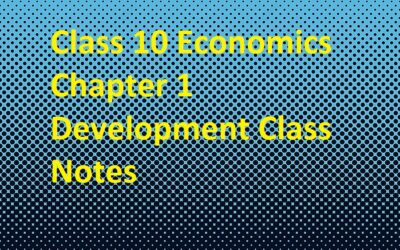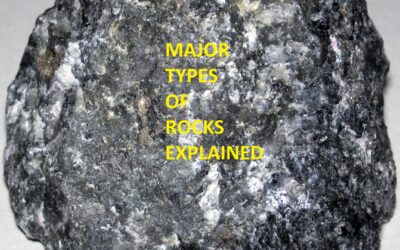Roadmap For Teachers With Seven 21st Century Skills
Roadmap for teachers is extremely essential for academic excellence in the 21st century. By using the Roadmap, educational leaders can determine where their system is and where they need to go in each of the topic areas. With the help of a Roadmap, they can find examples of successful transformations and guidance on how to navigate their own paths to creating 21st-century learning environments. By mapping out the current landscape of 21stcentury skills development, we will see that these skills have a stronger presence in curricula. The Roadmap for teachers in today’s world is needed to guide educators, school administrators and policy makers through the intricate process of implementing 21st century skill education.
Roadmap For Teachers With Seven 21st Century Skills
To Understand The 21st Century Skills
Firstly, to Introduce the concept of 21st-century skills, highlighting their importance in preparing students for the challenges of the modern world.
Secondly, to discuss the core components of these skills, such as critical thinking, creativity, communication, collaboration, digital literacy, and cultural awareness.
Understanding the Importance of 21st Century Skills
In today’s rapidly evolving world, traditional education models are no longer sufficient to prepare students for the challenges they will face in their future
careers and lives.
The 21st century skills landscape encompasses a set of abilities and competencies that are essential for success in the modern age.
These skills go beyond traditional academic knowledge and focus on developing critical competencies that enable individuals to thrive in a complex,
interconnected, and technology-driven society.
Insights into Key 21st Century Skills
Critical Thinking
Encourage students to question assumptions, analyze information critically, and make informed decisions.
Provide opportunities for structured problem-solving activities and discussions that promote deeper understanding and analytical thinking.
Creativity
Foster creativity by allowing students to explore their interests, experiment with different ideas, and express themselves through various mediums.
Incorporate art, music, design projects, and open-ended assignments that encourage creative thinking and innovation.
Communication
Teach effective communication skills, including verbal, written, and digital communication.
Emphasize the importance of clarity, active listening, empathy, and adapting communication styles to different audiences and contexts.
Collaboration
Promote collaboration by creating opportunities for teamwork, group projects, and collaborative learning experiences.
Teach students how to work effectively in teams, communicate ideas, resolve conflicts, and leverage collective strengths to achieve common goals.
Digital Literacy
Equip students with digital literacy skills, including the ability to use digital tools, navigate online resources, evaluate information credibility, and practice
responsible digital citizenship.
Integrate technology into lessons and assignments to enhance digital literacy competencies.
Cultural Awareness
Cultivate cultural awareness and global competence by exposing students to diverse perspectives, cultures, and global issues.
Incorporate multicultural content, global studies, virtual exchanges, and cross-cultural activities to broaden students’ worldview and foster empathy and
respect for others.
Roadmap For Teachers With Seven 21st Century Skills
Embracing Technology Integration
Firstly, to discuss the pivotal role of technology in modern education and how teachers can integrate digital tools and platforms effectively into their
teaching practices.
Secondly, to highlight the benefits of technology in enhancing student engagement, personalizing learning experiences, and fostering creativity.
The Importance of Technology Integration
In today’s digital age, technology plays a crucial role in education by transforming traditional teaching methods, enhancing learning experiences, and
equipping students with essential 21st-century skills.
Embracing technology integration in the classroom allows teachers to create dynamic and engaging learning environments that cater to diverse learning
styles, promote collaboration, and foster creativity and innovation.
Insights into Effective Technology Integration
Personalized Learning
Use technology to personalize learning experiences for students based on their individual needs, interests, and learning preferences.
Adaptive learning platforms, interactive apps, and online resources can provide customized learning pathways and real-time feedback.
Active Engagement
Leverage technology tools such as multimedia presentations, interactive simulations, educational games, and virtual reality experiences to actively engage
students in the learning process.
Encourage active participation, exploration, and hands-on learning opportunities.
Global Connectivity
Utilize technology to connect students with global communities, experts, and resources, fostering cultural awareness, global competence, and
collaboration across geographical boundaries.
Virtual exchanges, video conferencing, and online collaboration platforms can facilitate meaningful cross-cultural interactions.
Digital Creation
Empower students to create digital content such as videos, podcasts, blogs, digital artwork, and interactive presentations to demonstrate their
understanding, express their creativity, and communicate ideas effectively using digital media.
Data-Driven Insights
Leverage data analytics and learning analytics tools to gain insights into student progress, performance trends, and learning outcomes.
Use data-driven insights to tailor instruction, identify areas for improvement, and provide targeted support to students.
Roadmap For Teachers With Seven 21st Century Skills
Cultivating Critical Thinking and Problem-Solving Skills
Explain strategies for nurturing critical thinking and problem-solving skills among students.
Provide examples of project-based learning, case studies, and real-world scenarios that encourage students to analyze, evaluate, and propose solutions
to complex problems.
Understanding Critical Thinking and Problem-Solving
Critical thinking and problem-solving are foundational skills in the 21st century, enabling individuals to analyze information, evaluate arguments, make
reasoned decisions, and solve complex problems effectively.
Cultivating these skills is essential for students to become independent learners, innovative thinkers, and proactive problem solvers in various academic
and real-world contexts.
Insights into Effective Instruction for Critical Thinking and Problem-Solving
Questioning Strategies
Encourage students to ask meaningful questions, challenge assumptions, and explore multiple perspectives. Use open-ended questions, Socratic
questioning techniques, and inquiry-based approaches to stimulate critical thinking and promote deep understanding.
Analytical Skills
Teach students how to analyze information critically by breaking down complex ideas, identifying key concepts, evaluating evidence, and discerning
between fact and opinion. Provide opportunities for close reading, data analysis, and source evaluation exercises.
Creative Problem-Solving
Foster creativity and innovation by presenting students with real-world problems or challenges that require creative solutions. Encourage brainstorming,
divergent thinking, and experimentation to generate innovative ideas and approaches to problem-solving.
Collaborative Problem-Solving
Promote collaborative problem-solving skills by engaging students in group projects, case studies, and team-based activities where they can work
together to analyze problems, develop solutions, and communicate their findings effectively.
Metacognitive Strategies
Teach metacognitive strategies such as self-reflection, self-assessment, and goal setting to help students monitor their thinking processes, identify areas
for improvement, and develop effective problem-solving strategies over time.
Integrating Bihar with Tripura and Mizoram Under Ek Bharat Shreshtha Bharat
Integrating Chhattisgarh with Gujarat – Complete Guidance
Roadmap For Teachers With Seven 21st Century Skills
Promoting Creativity and Innovation
Firstly, to discuss the importance of fostering creativity and innovation in the classroom.
Secondly, to share techniques such as brainstorming sessions, design thinking workshops, and encouraging experimentation to inspire students to think
outside the box and develop innovative solutions.
Understanding Creativity and Innovation
Creativity and innovation are indispensable skills in the 21st century, fostering original thinking, problem-solving abilities, and the generation of novel ideas
and solutions.
By promoting creativity and innovation in the classroom, teachers can empower students to think outside the box, explore new possibilities, and contribute
meaningfully to their learning and the world around them.
Insights into Effective Instruction for Creativity and Innovation
Create a Supportive Environment
Establish a classroom culture that values and encourages creativity, risk-taking, and experimentation.
Provide a safe space where students feel comfortable expressing their ideas, trying new approaches, and embracing failure as part of the learning
process.
Encourage Divergent Thinking
Firstly, encourage divergent thinking by posing open-ended questions, exploring multiple perspectives, and challenging assumptions.
Secondly, encourage students to brainstorm, explore alternative solutions, and consider unconventional ideas without judgment.
Emphasize Process Over Product
Shift the focus from solely evaluating final outcomes to valuing the creative process itself.
Emphasize iteration, revision, and reflection as essential components of the creative process, allowing students to refine their ideas and solutions over
time.
Integrate Arts and Design
Incorporate arts, design thinking, and creative disciplines into the curriculum to foster creativity and innovation across subject areas.
Encourage students to engage in visual arts, music, theater, storytelling, and design projects that inspire creative expression and problem-solving.
Promote Collaboration
Encourage collaborative creativity by fostering teamwork, peer collaboration, and collective brainstorming sessions.
Provide opportunities for students to collaborate on creative projects, share ideas, and build upon each other’s contributions.
“A Kaleidoscope of Cultures: Exploring the Rich Tapestry of Cultural Diversity in India”
Roadmap For Teachers With Seven 21st Century Skills
Enhancing Communication and Collaboration
Firstly, to highlight the significance of effective communication and collaboration skills in the 21st century.
Secondly, offer tips for creating a collaborative classroom environment, such as group projects, peer feedback mechanisms, and communication tools that
facilitate seamless collaboration among students.
Importance of Communication and Collaboration
Communication and collaboration are foundational skills in the 21st century, critical for success in academic, professional, and personal spheres.
Effective communication fosters understanding, builds relationships, and promotes teamwork, while collaboration enables individuals to leverage diverse
perspectives, pool resources, and achieve collective goals. By enhancing communication and collaboration skills, teachers can prepare students for the
complexities of the modern world and empower them to thrive in collaborative environments.
Insights into Effective Instruction for Communication and Collaboration
Clear Communication Objectives
Clearly define communication objectives, including verbal and written communication skills, active listening, empathy, and adapting communication styles
based on audience and context.
Facilitate Active Listening:
Teach active listening techniques such as paraphrasing, summarizing, and asking clarifying questions to ensure that students understand and engage with
others’ ideas effectively.
Encourage Constructive Feedback
Foster a culture of constructive feedback where students learn to provide and receive feedback respectfully, focusing on specific observations, strengths,
areas for improvement, and actionable suggestions.
Promote Digital Communication
Integrate digital communication tools such as email, messaging apps, video conferencing, and collaborative platforms to facilitate communication and
collaboration in both synchronous and asynchronous settings.
Cultivate Collaboration Skills
Provide opportunities for collaborative projects, group discussions, peer review, and teamwork activities that require students to communicate, cooperate,
solve problems, and achieve shared objectives collaboratively.
Exploring Pedagogical strategies in social studies for elementary and secondary schools
Roadmap For Teachers With Seven 21st Century Skills
Developing Digital and Information Literacy
Firstly, to address the need for students to develop digital literacy skills, including the ability to navigate digital tools, evaluate online information, and
practice responsible digital citizenship.
Secondly, to provide resources and strategies for teachers to incorporate digital literacy into their curriculum effectively.
Understanding Digital Literacy and Information Literacy
Digital literacy refers to the ability to effectively use digital tools, platforms, and resources to access, analyze, evaluate, and create digital content.
Information literacy, on the other hand, encompasses the skills needed to locate, evaluate, and use information effectively from various sources, including
digital and traditional formats. Both digital literacy and information literacy are crucial components of 21st-century skills, empowering students to navigate
the digital landscape, critically assess information, and communicate ideas effectively.
Insights into Effective Instruction for Digital and Information Literacy
Digital Skills Integration
Integrate digital tools and platforms into instructional practices to enhance digital literacy skills, including proficiency in using productivity tools, online
research, digital communication, media creation, and information management.
Information Evaluation
Teach students how to critically evaluate information from various sources, including websites, databases, articles, and multimedia content, assessing
credibility, accuracy, relevance, bias, and authority.
Cybersecurity and Online Safety
Educate students about cybersecurity best practices, online safety, digital citizenship, privacy protection, and responsible use of digital resources,
emphasizing ethical considerations and digital etiquette.
Media Literacy
Foster media literacy skills by teaching students how to analyze and interpret media messages, recognize media bias and stereotypes, and differentiate
between credible and misleading sources of information.
Digital Content Creation
Encourage students to create digital content such as presentations, videos, infographics, blogs, and podcasts, demonstrating their understanding,
creativity, and communication skills using digital media.
“Revolutionizing the Classroom: How Chat GPT is Changing the Way Social Science Teachers Teach”
Roadmap For Teachers With Seven 21st Century Skills
Embracing Cultural Awareness and Global Competence
Firstly, to emphasize the importance of cultural awareness and global competence in an interconnected world.
Secondly, to discuss the value of exposing students to diverse perspectives, global issues, and cross-cultural experiences through activities such as
multicultural projects, virtual exchanges, and global awareness initiatives.
Understanding Cultural Awareness and Global Competence
Cultural awareness involves understanding and respecting diverse cultural perspectives, values, beliefs, traditions, and practices.
Global competence goes beyond cultural awareness and includes the ability to navigate global issues, collaborate with individuals from different cultural
backgrounds, and contribute positively to a globalized world. Embracing cultural awareness and global competence is crucial for preparing students to
thrive in multicultural environments, appreciate diversity, and engage as responsible global citizens.
Insights into Effective Instruction for Cultural Awareness and Global Competence
Promote Intercultural Dialogue
Facilitate discussions, activities, and projects that encourage students to explore and appreciate diverse cultures, share their own cultural experiences,
and engage in respectful intercultural dialogue.
Global Citizenship Education
Integrate global citizenship education into the curriculum, addressing global challenges, sustainability, human rights, social justice, and cross-cultural
understanding through interdisciplinary and experiential learning opportunities.
Virtual Exchanges
Organize virtual exchanges, international collaborations, or cultural exchange programs that connect students with peers from different countries, fostering
cross-cultural communication, empathy, and global awareness.
Multicultural Content
Incorporate multicultural content, diverse perspectives, global literature, world history, and cultural studies into lessons, readings, media, and resources to
broaden students’ worldview and promote cultural empathy.
Service-Learning Projects
Engage students in service-learning projects or community initiatives that address global issues, promote social responsibility, and encourage
collaboration with local and global communities to make a positive impact.
Roadmap For Teachers With Seven 21st Century Skills
Examples of Integrating 21st Century Skills in Instruction
Project-Based Learning
Design projects that require students to apply critical thinking, creativity, collaboration, and communication skills to solve real-world problems or explore
complex topics.
Flipped Classroom
Use technology to flip the classroom model, allowing students to engage with content outside of class and use class time for interactive discussions,
collaborative activities, and hands-on projects.
Peer Feedback
Implement peer feedback mechanisms where students provide constructive feedback to their peers on projects, presentations, or written work, promoting
communication skills and collaborative learning.
Digital Storytelling
Incorporate digital storytelling tools and assignments that encourage students to communicate ideas effectively using multimedia elements such as videos,
graphics, and interactive presentations.
If US Can Have Six, Why Can’t India Have Two-Time Zones?
Roadmap For Teachers With Seven 21st Century Skills
Practical Tips for Teachers
Professional Development
Stay updated with the latest trends, research, and best practices in 21st-century skills through professional development opportunities, workshops,
conferences, and online resources.
Curriculum Design
Integrate 21st-century skills into your curriculum by aligning learning objectives, assessments, and activities that promote the development of critical
competencies.
Technology Integration
Explore and leverage educational technology tools and platforms that support the development of digital literacy, creativity, collaboration, and
communication skills.
Student-Centered Approaches
Adopt student-centered instructional approaches that empower students to take ownership of their learning, explore their interests, and develop self-
directed learning skills.
Reflection and Feedback
Encourage reflection and provide constructive feedback to students on their progress in developing 21st-century skills, highlighting areas of growth and
improvement.
Why You Never See Social Science Lesson Plan That Actually Works?
Roadmap For Teachers With Seven 21st Century Skills
Conclusion:
Firstly, by embracing technology integration effectively, teachers can create innovative and engaging learning experiences that empower students to develop essential 21st-century skills such as digital literacy, critical thinking, collaboration, creativity, and global awareness, preparing them for success in the digital age and beyond
Secondly, by cultivating critical thinking and problem-solving skills effectively, teachers can empower students to become analytical thinkers, creative problem solvers, and lifelong learners who are well-equipped to navigate challenges, make informed decisions, and contribute positively to society in the 21st century
Thirdly, by promoting creativity and innovation effectively, teachers can nurture students’ creative potential, spark curiosity, and inspire a lifelong passion for learning, problem-solving, and making meaningful contributions to society in the 21st century.
Fourthly, by enhancing communication and collaboration effectively, teachers can equip students with essential 21st-century skills, including effective communication, teamwork, problem-solving, and interpersonal skills, preparing them for success in academic, professional, and social contexts.
Finally, by developing digital literacy and information literacy effectively, teachers can empower students to navigate the digital world confidently, critically evaluate information, communicate effectively using digital media, and become responsible and ethical users of technology and information in the 21st century
Blended Learning: Combining Digital Tools With Traditional Classrooms





0 Comments